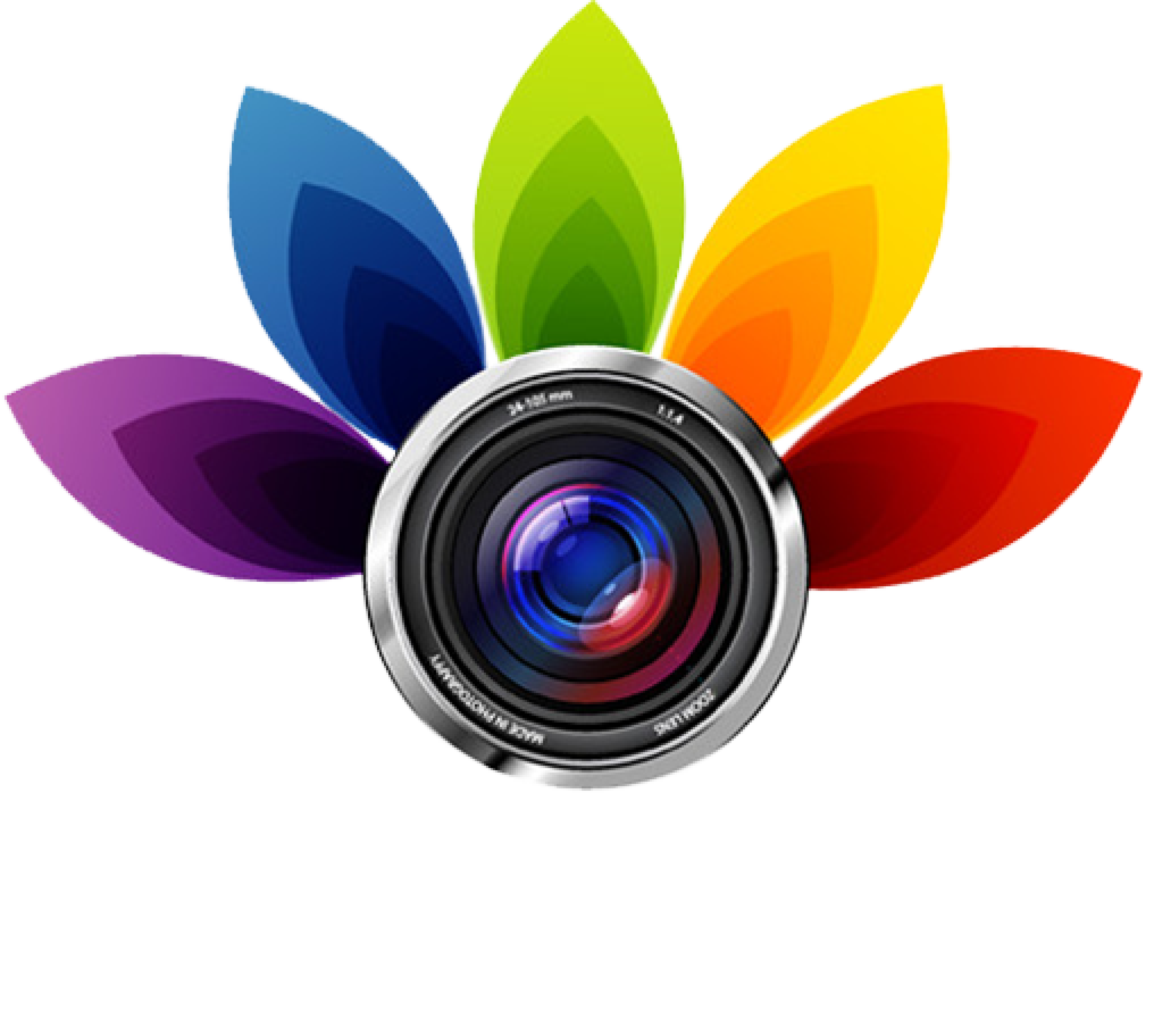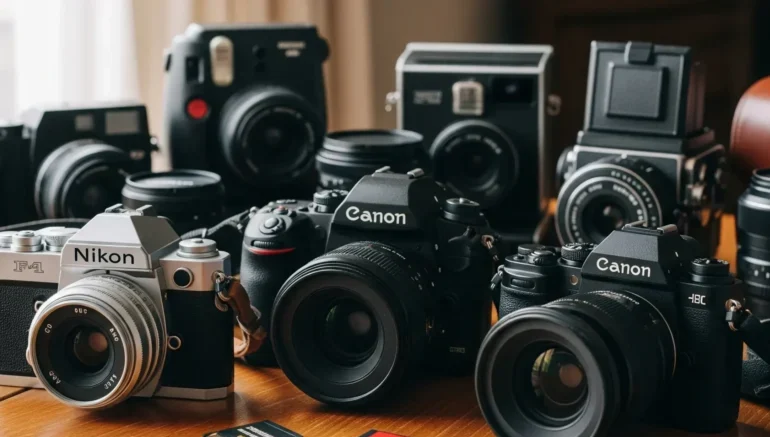
Top 10 Best Cameras for Photography
Finding the right camera can feel overwhelming with so many options out there. If you are just starting out, love taking photos as a hobby, or work as a professional photographer, having the best cameras for photography makes a big difference. The best camera can help you take clear, sharp, and amazing photos without making the process complicated. It’s not just about the brand or price, it’s about finding a camera that fits your style, your skills, and your needs.
In this guide, we’ve put together a list of the best cameras that photographers are using right now. We cover cameras for beginners who want something simple to start with, enthusiasts looking to improve their shots, and professionals needing top-level performance. These cameras were trending in 2020, but they still offer great quality and features that make photography easier and more fun. By checking out this list, you can pick the right camera to match your goals and start taking amazing photos today.
Best Camera for Photography
Canon EOS Rebel SL3 / 250D (For Beginners)
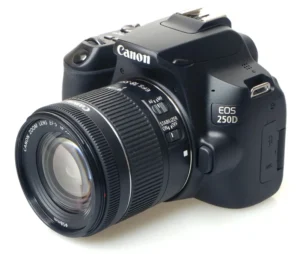 The Canon EOS Rebel SL3 (EOS 250D in the UK) is a massive camera for beginners, because even if it costs a little more than entry-level models like the D3500, it has lots of features to make picture taking easier and more exhilarating, and the potential to take on more advanced projects as your skills increase. The 24-megapixel APS-C sensor delivers great results, but the star of the show is Canon’s advanced Dual Pixel CMOS AF system, which makes the live view autofocus (when you use the rear screen rather than the viewfinder) extremely fast.
The Canon EOS Rebel SL3 (EOS 250D in the UK) is a massive camera for beginners, because even if it costs a little more than entry-level models like the D3500, it has lots of features to make picture taking easier and more exhilarating, and the potential to take on more advanced projects as your skills increase. The 24-megapixel APS-C sensor delivers great results, but the star of the show is Canon’s advanced Dual Pixel CMOS AF system, which makes the live view autofocus (when you use the rear screen rather than the viewfinder) extremely fast.
Better still, the rear screen is both fully-articulating and touch-sensitive, so you can take pictures at all sorts of odd angles, and for the first time in a DSLR at this price it’s possible to shoot 4K video, this is the perfect DSLR for bloggers and vloggers, not just regular photographers.
Pros
- Compact & Lightweight
- User-Friendly Guide Mode
- Dual Pixel Autofocus
- 4K Video Recording
- Long Battery Life
Cons
- Limited Autofocus in 4K
- 9-Point AF System
- No Weather Sealing
- Fixed LCD Screen
- No 120fps Video
Olympus OM-D E-M10 III (For Beginners)
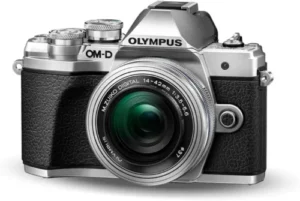 The Canon EOS Rebel SL3 / 250D is exceptionally compact for a DSLR, but the OM-D E-M10 III is smaller still, an Olympus OM-D E-M10 III shows off the size advantage of Olympus’s mirrorless Micro Four Thirds format. The Olympus OM-D E-M10 Mark III is a gemstone of a camera that’s easy to get started with but gives you unexpected capacity and features later.
The Canon EOS Rebel SL3 / 250D is exceptionally compact for a DSLR, but the OM-D E-M10 III is smaller still, an Olympus OM-D E-M10 III shows off the size advantage of Olympus’s mirrorless Micro Four Thirds format. The Olympus OM-D E-M10 Mark III is a gemstone of a camera that’s easy to get started with but gives you unexpected capacity and features later.
It uses a smaller 16-megapixel Micro Four Thirds sensor than most mirrorless cameras, but you shouldn’t read too much into that, and it does take a wide range of compact and affordable Olympus and Panasonic lenses. It also has an excellent 5-axis in-body stabilization system, shoots 4K video and comes with a wide selection of Olympus’s rather good Art Filters. It’s small but important and a great travel camera too.
Pros
- Compact & Lightweight
- 5-Axis In-Body Image Stabilization
- 4K Video Recording
- User-Friendly Interface
- High-Resolution EVF
Cons
- 16MP Sensor
- No Weather Sealing
- Limited Lens Selection
- No 4K HDMI Output
- No Phase Detection AF
Nikon D3500(For Intermediate Level Users)
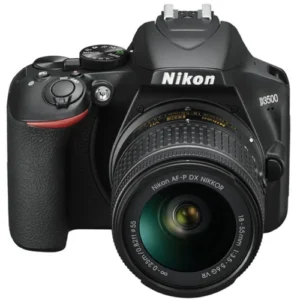 The same 24.2-megapixel resolution but a redesigned body and improved battery life. In fact, this offer great value for beginners, and the Nikon D3500 is the perfect example. There’s a lot the D3500 doesn’t do, it has a fixed rear screen that’s not touch-sensitive, it doesn’t have hybrid on-sensor autofocus and it doesn’t shoot 4K video. Its 24-megapixel sensor delivers super-high-quality images, Nikon’s latest AF-P retracting kit lens is a miniature marvel and focuses very fast in live view, even without on-sensor phase-detection autofocus. The D3500 handles well, it’s easy to use and it’s more important than it looks.
The same 24.2-megapixel resolution but a redesigned body and improved battery life. In fact, this offer great value for beginners, and the Nikon D3500 is the perfect example. There’s a lot the D3500 doesn’t do, it has a fixed rear screen that’s not touch-sensitive, it doesn’t have hybrid on-sensor autofocus and it doesn’t shoot 4K video. Its 24-megapixel sensor delivers super-high-quality images, Nikon’s latest AF-P retracting kit lens is a miniature marvel and focuses very fast in live view, even without on-sensor phase-detection autofocus. The D3500 handles well, it’s easy to use and it’s more important than it looks.
Pros
- Excellent Image Quality
- Long Battery Life
- User-Friendly Guide Mode
- Compact & Lightweight
- Reliable Performance
Cons
- Limited Autofocus System
- No 4K Video Recording
- Fixed LCD Screen
- No Touchscreen
- Plastic Build
Panasonic TZ200/ZS200 (Beginner to Intermediate)
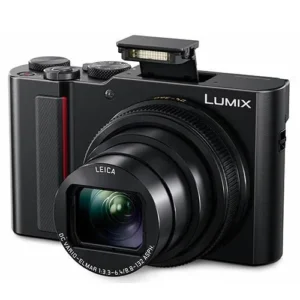 Replaceable lens DSLR and mirrorless cameras are great if you want to get seriously into photography but can be overkill when you just want to grab pictures casually. Sometimes a fixed lens compact camera will be fine, especially if you want to do a lot of travelling, and if you’re more concerned with taking the moment than fussing over technicalities.
Replaceable lens DSLR and mirrorless cameras are great if you want to get seriously into photography but can be overkill when you just want to grab pictures casually. Sometimes a fixed lens compact camera will be fine, especially if you want to do a lot of travelling, and if you’re more concerned with taking the moment than fussing over technicalities.
A superzoom travel camera is the perfect solution, but most have small 1/2.3-inch sensors which limit their picture quality. The Panasonic TZ200/ZS200 is different. It has a much larger 1-inch sensor for much better pictures, matched up with a big 15x zoom, and yet it will still fit in a jacket pocket when it’s powered down. The TZ200/ZS200 isn’t exactly cheap, but it’s surely one of the best long-zoom compact cameras you can get, and it has features and controls that will even please experts.
Pros
- 15x optical zoom
- 1.0-inch, 20.1MP sensor
- Built-in EVF
- 4K video and photo modes
- Compact and travel-friendly design
Cons
- Slow maximum aperture (f/3.3–f/6.4)
- Fixed LCD screen
- Electronic viewfinder (EVF) is small
- No in-body image stabilization
- Limited manual control
Canon Ixus 185 HS (For Beginners)
 The Canon IXUS 185 is a new budget compact camera. The Canon 185 features a 20-megapixel 1/2.3-inch CCD sensor and a 10x optical zoom lens which is equivalent to 28-224mm in 35mm terms, 720p movie recording, and Intelligent Image Stabilization for stills and movies. If you think of it instead as an alternative to a smartphone, it has A LOT going for it.
The Canon IXUS 185 is a new budget compact camera. The Canon 185 features a 20-megapixel 1/2.3-inch CCD sensor and a 10x optical zoom lens which is equivalent to 28-224mm in 35mm terms, 720p movie recording, and Intelligent Image Stabilization for stills and movies. If you think of it instead as an alternative to a smartphone, it has A LOT going for it.
For a start, there are no smartphones with an 8x optical zoom, and the price of the Ixus 185 means you don’t have to lie awake at night wondering if you’ve got it adequately insured. It’s perfect for kids, teenagers and technophobic adults who want a camera to take pictures with and to keep their phone for making phone calls.
Pros
- Compact & Lightweight
- 20MP Sensor
- 8x Optical Zoom
- User-Friendly Interface
- Macro Mode
Cons
- Limited Low-Light Performance
- No Wi-Fi Connectivity
- 720p Video Resolution
- Fixed LCD Screen
- No USB Charging
Nikon Coolpix W300 (Family Camera)
 Family cameras have a hard life, so if you need one that can put up with the rough and tumble and even a little underwater adventure, the Nikon Coolpix W300 could be perfect. It’s rated at depths of 30m, outstripping most waterproof cameras, and it comes with a barometer that provides useful underwater data like altitude and depth, as well as an electronic compass.
Family cameras have a hard life, so if you need one that can put up with the rough and tumble and even a little underwater adventure, the Nikon Coolpix W300 could be perfect. It’s rated at depths of 30m, outstripping most waterproof cameras, and it comes with a barometer that provides useful underwater data like altitude and depth, as well as an electronic compass.
You get Bluetooth and Nikon’s Snap Bridge technology for fast image transfer. Video shooters will also welcome the addition of 4K video to the W300’s toolkit, and the generous shockproof rating of 2.4m means it’s extra protected against bumps and knocks. Keen photographers will have to do without raw take, but most casual snappers will be happy to stick with JPEGs and find this camera a superb all-rounder.
Pros
- Waterproof to 30 meters (100 ft)
- Shockproof up to 2.4 meters (8 ft)
- Freezeproof to -10°C (14°F)
- 4K UHD Video Recording
- Built-in GPS, Compass, and Barometer
- 5x Optical Zoom Lens (24–120mm equivalent)
Cons
- No RAW Image Support
- Limited Manual Controls
- No Optical Image Stabilization
- No Touchscreen Interface
- Battery Life Affected by Cold
- No 4K Time-Lapse Video
Fujifilm X-T3 (for Professionals)
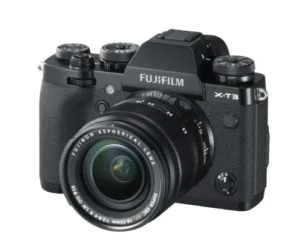 If you want to shoot sports, 4K video or all-round photographic subjects, the X-T3 does it all brilliantly. It has Fujifilm’s latest 26.1-megapixel APS-C format sensor with 11fps continuous shooting that goes up to an amazing 30fps in 1.25x crop mode with its electronic shutter. Fujifilm’s new autofocus system covers pretty much the whole image area, and it can take4K video at 60/50fps, a feat that only dedicated video-centric cameras like the Panasonic GH5S have been able to manage until now. The only thing missing is in-body stabilization, but in the context of everything this camera can do, that’s a minor issue.
If you want to shoot sports, 4K video or all-round photographic subjects, the X-T3 does it all brilliantly. It has Fujifilm’s latest 26.1-megapixel APS-C format sensor with 11fps continuous shooting that goes up to an amazing 30fps in 1.25x crop mode with its electronic shutter. Fujifilm’s new autofocus system covers pretty much the whole image area, and it can take4K video at 60/50fps, a feat that only dedicated video-centric cameras like the Panasonic GH5S have been able to manage until now. The only thing missing is in-body stabilization, but in the context of everything this camera can do, that’s a minor issue.
Pros
- Exceptional Image Quality
- Advanced Autofocus
- High-Speed Performance
- 4K Video Capabilities
- Robust Build Quality
- Classic Control Layout
Cons
- No In-Body Image Stabilization (IBIS)
- Limited Touchscreen Functionality
- No Built-in Flash
- No 4K Time-Lapse Video
Canon EOS 6D II (for Professionals)
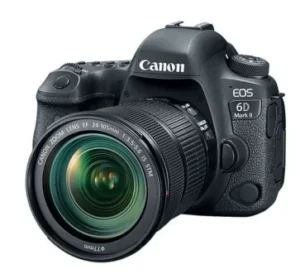 If you’re a keen photographer upgrading an existing camera, quality and features are going to be high on your shopping list, and the Canon EOS 6D Mark II offers both, but at a surprisingly reasonable price. Canon’s 2018 was dominated by the speculation and then excitement around the launch of its EOS R full frame mirrorless system, but many users still prefer the size and handling of a DSLR, and the Canon EOS 6D Mark II is Canon’s cheapest full frame DSLR and a bit of a slow burner, as steady price drops have made it more and more appealing.
If you’re a keen photographer upgrading an existing camera, quality and features are going to be high on your shopping list, and the Canon EOS 6D Mark II offers both, but at a surprisingly reasonable price. Canon’s 2018 was dominated by the speculation and then excitement around the launch of its EOS R full frame mirrorless system, but many users still prefer the size and handling of a DSLR, and the Canon EOS 6D Mark II is Canon’s cheapest full frame DSLR and a bit of a slow burner, as steady price drops have made it more and more appealing.
Its 26-megapixel resolution and 6.5fps continuous shooting speed are unremarkable, but its effective control layout, vary-angle touchscreen and rather good live view autofocus give it nice handling. If you want to step up to full frame DSLR photography, this is a very effective and affordable way to do it.
Pros
- Full-Frame Sensor
- 26.2MP Resolution
- 45-Point Autofocus System
- Vari-Angle Touchscreen LCD
- Built-in Wi-Fi, Bluetooth, and GPS
- Weather-Sealed Body
Cons
- No 4K Video Recording
- Single Memory Card Slot
- Limited Dynamic Range
- No Headphone Jack
- No 120fps Video Recording
Nikon Z 6 (for Professionals)
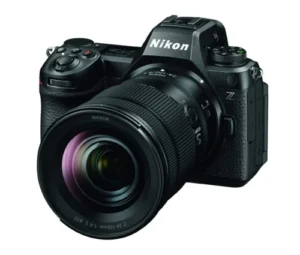 The EOS 6D Mark II is a good value ‘old school’ full frame DSLR, while Nikon’s new mirrorless Z series is right at the cutting edge of camera technology. We love the 45.7-megapixel Nikon Z 7, which is a direct rival to the Nikon D850 And Sony A7R III, but not everyone can afford it, and while the Z 6 has a lower-resolution 24MP sensor, it’s a lot cheaper than the Z 7 and does have some technical advantages, including a slightly higher 12fps continuous shooting speed and full-frame 4K video.
The EOS 6D Mark II is a good value ‘old school’ full frame DSLR, while Nikon’s new mirrorless Z series is right at the cutting edge of camera technology. We love the 45.7-megapixel Nikon Z 7, which is a direct rival to the Nikon D850 And Sony A7R III, but not everyone can afford it, and while the Z 6 has a lower-resolution 24MP sensor, it’s a lot cheaper than the Z 7 and does have some technical advantages, including a slightly higher 12fps continuous shooting speed and full-frame 4K video.
Physically, the Z6 is identical to the Z 7, so it has the same tough, well-designed and good-handling body. Nikon’s Z-series cameras are a little wider than the Sony A7 models, and the Z 6 makes a great entry-level all-round full-frame mirrorless camera. Recently Nikon also announced a new Z 50, its first sub-£999 camera in this series, and we’re interested to see how it performs.
Pros
- Full-Frame Sensor
- 5-Axis In-Body Image Stabilization
- High-Resolution EVF
- Continuous Shooting Speed
- 4K UHD Video Recording
- Robust Build Quality
Cons
- Single Memory Card Slot
- No 4K 60p Video
- Limited Native Lens Selection
- No Fully Articulating Screen
- No Built-In Flash
Nikon D850 (for Professionals)
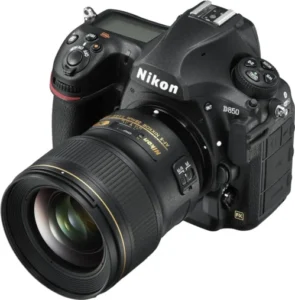 Nikon D850 is a stand-out example. This is largely down to its chunky, rugged design and its versatility. The 45.7MP sensor provides bags of resolution for landscapes and still-life setups, while 7fps burst shooting and a 153-point AF system means it’s equally at home when faced with action and you can boost this to 9fps with an optional battery pack. Wedding photographers will love the silent burst shooting mode, and it takes 4K video too. The robust, weather-sealed body means you can easily rely on it in even challenging conditions. The Nikon D850 is easily one of the best professional-level cameras you can buy.
Nikon D850 is a stand-out example. This is largely down to its chunky, rugged design and its versatility. The 45.7MP sensor provides bags of resolution for landscapes and still-life setups, while 7fps burst shooting and a 153-point AF system means it’s equally at home when faced with action and you can boost this to 9fps with an optional battery pack. Wedding photographers will love the silent burst shooting mode, and it takes 4K video too. The robust, weather-sealed body means you can easily rely on it in even challenging conditions. The Nikon D850 is easily one of the best professional-level cameras you can buy.
Pros
- High-Resolution Sensor
- Fast Continuous Shooting
- Advanced Autofocus System
- 4K UHD Video Recording
- Robust Build Quality
Cons
- No In-Body Image Stabilization (IBIS)
- Heavy and Bulky Design
- Limited Video Features
- No Built-In Flash
- Single Memory Card Slot
Conclusion
Choosing the right camera doesn’t have to be overwhelming. If you’re just starting out, an enthusiast, or a professional, there’s a camera that fits your needs, style, and goals. From compact beginner-friendly models to powerful professional DSLRs and mirrorless cameras, each option offers unique features to help you take better photos. Think about what matters most to you, size, ease of use, image quality, or advanced features, and pick a camera that matches your priorities. With the right choice, photography becomes simpler, more enjoyable, and more rewarding. Which camera from this list would you try first? Share your thoughts in the comments.
Read Next: 10 Best Photo Editing Blogs and Websites in 2025
